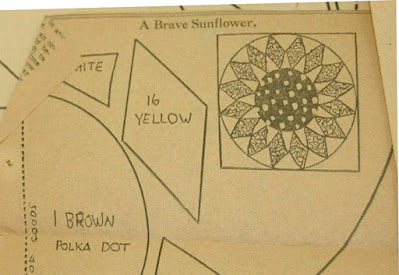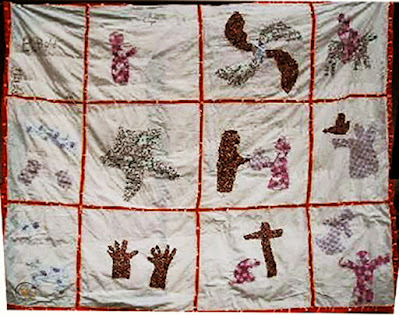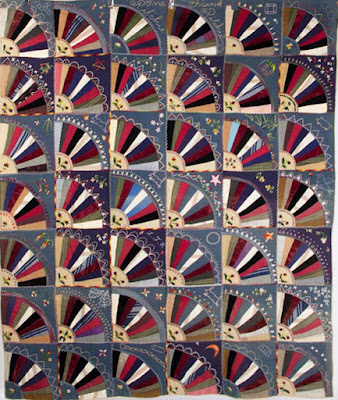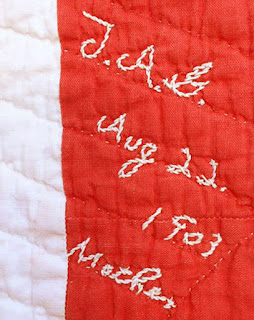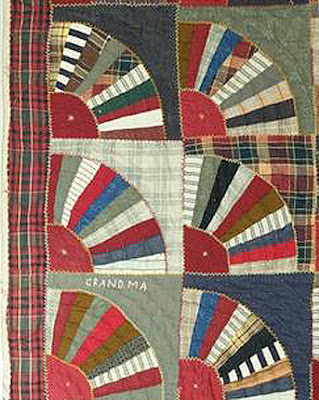QUILTS & FABRIC: PAST & PRESENT
Friday, September 30, 2022
Southern Spin #7 Brave Sunflower
Sunday, September 25, 2022
Pearlie Caddell's Intriguing Quilt
The seller knew something about it, writing that it was a:
"1930 African American Christmas Quilt... from the South Alabama estate of Pearlie Caddell--the only Christmas Quilt I have ever acquired from an African American estate…..12 blocks. The first is "Behold" and their family names embroidered. All embroidery work was done in brown. ….Pearlie married Ludie Caddell they had several children."
The 1930 census recorded Ludie Caddles (?), a 32-year-old Black farmer living in Hale County with wife Pearl. In 1930 they had 2 sons and 3 daughters from 10-years-old down to 1. Pearl was 33, born about 1897 in Alabama. Ola Belle listed as 10 here was actually born in 1903 according to her wedding record in 1936 when she was 19, so the numbers are suspect. Ola's mother was listed as Pearl Wilson Caddell on that marriage record from Family Search. Ludie Jr.'s Social Security Death Index record indicates he lived from 1921 to 1965, indicating that his age of 9 here was accurate.
They likely lived near Havana, Alabama in Hale County between Tuscaloosa---about 30 miles north--- and 60 miles north of Boykin, what's called Gees Bend today---famous in terms of 20th-century quilts.
Pearlie Wilson Caddell was of a younger generation than Harriet Powers (1837-1910). The Powers quilt shown, one of her two surviving Biblical quilts, dates from before Pearlie's birth.
Text for the listing indicates the seller had bought several quilts from Pearlie's estate but I couldn't find any others.
The listing:
https://www.worthpoint.com/inventory/search?categories=aaa&query=pearlie+caddell
A curious coincidence?
Tuesday, September 20, 2022
Fans: Myth, Style and Dates



